Our region has always been a land of passage and a gateway to other cultures. Long before tourists invaded, Puglia was conquered by the Greeks, Romans, and Ostrogoths. By the Byzantine Empire, Normans, Aragonese, and the French.
Many of their influences are seen today. In our architecture, local dialects (in some places more widely spoken than Italian) and, most significantly, in Puglia’s cuisine.
Food is an integral part of Puglia’s identity.
We are Italy’s biggest producer of olive oil. Around 40% of Italian olive oil comes from Puglia. We are Italy’s 2nd largest wine producing region, known for rich, full bodied reds. And we gave the world burrata…
Our tradition of la cucina povera (“peasant food”) serves up simple but inventive dishes using seasonal, locally produced, fresh and flavorful ingredients. Most dishes use only a few ingredients and very little goes to waste. Humble and frugal, the end result is much more than the sum of its ingredients.
#EatPuglia and enjoy Puglia’s best dishes, streetfood, and regional produce. Buon appetito.
1. Orecchiette
Puglia’s iconic pasta shape is traditionally served up with bitter cime di rapa (broccoli rabe). Turnip tops, the misleading literal translation found on menus, is a misnomer.
From a simple tomato sugo to a rabbit ragù the voluptuous shape of orecchiette will offer a safe harbor for most sauces.
Orecchiette maritate are mixed with maccheroncini, or caserecci pasta. Symbolically served at weddings and other festivals.
More | Eat Puglia – orecchiette con cime di rapa
2. Polpette
Bread dumplings or meatballs, made from stale bread, strong grated cheese and herbs.
A staple of Puglian cuisine, polpette have a habit of finding you wherever you are in Puglia. As cheesy fried bread dumplings (di pane), aubergine fritters (di melanzane) and with the addition of ground meat, as meatballs (di carne).
Sometimes as an appetiser. Straight up, deep fried and crunchy. Or in a rich tomato sugo, with or without pasta.
Μore | Eat Puglia – polpette
3. Fave e cicoria
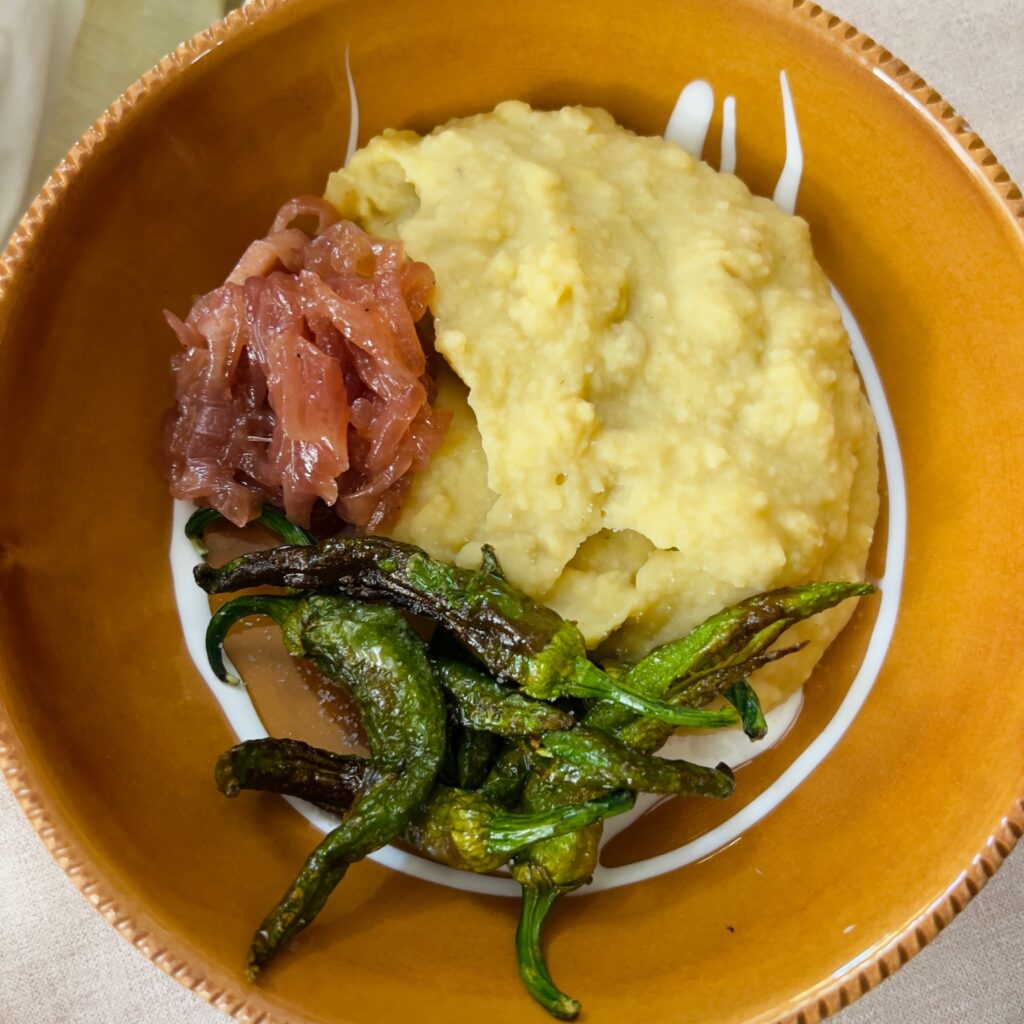
Comfort food from Puglia. Plain and simple and satisfying, which is why it is served at homes and in restaurants across our region.
A broad bean purée (made from dried fava beans), with braised greens. Usually cicoria, another bitter green, but shown here with friggitelli, sweet Italian peppers.
We love to drizzle ours with some peppery extra virgin olive oil at the table to finish it and add a piquancy that suits the purée.
4. Bombette pugliesi
Bite size parcels of thin meat, usually pork but sometimes veal or beef, stuffed with a selection of cheeses, cured meats and herbs.
Many butcher’s shops transform into a braceria by night.
Select your tightly skewered bombette and sausages, and other meats from the counter. Then wait for them to be grilled over glowing olive wood embers, and served up at table. Succulent and juicy.
A popular street food at carnivals and festivals.
5. Polpo panino
Choose from boiled, grilled or deep fried poplo (octopus).
Our favorite is served up at Polignano a Mare’s Pescaria, with cime di rapa, fig syrup, ricotta and and anchovy oil (beware the bitter greens).
Octopus is common on lunch and dinner menus. We enjoy insalata di polpo e patate and slow cooked with tomatoes in a terracotta pot (alla pignata).
Despite its deliciousness we try to eat less for ethical reasons.
6. Caffè leccese e pasticciotto
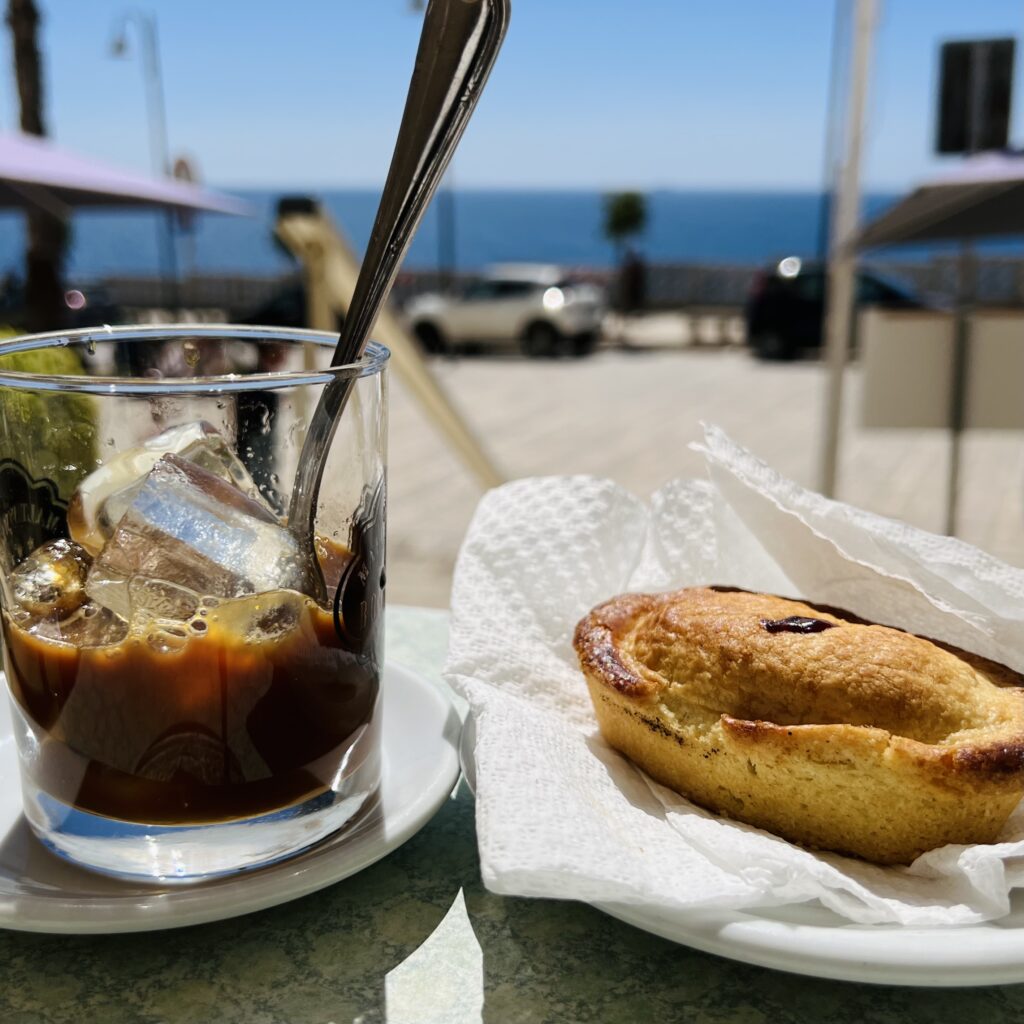
Served warm, the pasticciotto is a short crust pastry typically with a lemon custard filling. Alternatively it comes filled with a pistacchio cream, Nutella, jam, amarena cherry, or half and half.
The caffè leccese is also ordered by its full name; caffè con ghiaccio e latte di mandorla (coffee with ice and almond milk). But this shot of espresso over ice is made with almond syrup.
Together they are the definitive breakfast of Salento and an absolute must when having breakfast on the piazza in Lecce.
More | a caffè leccese in Lecce
7. Spaghetti all’assassina
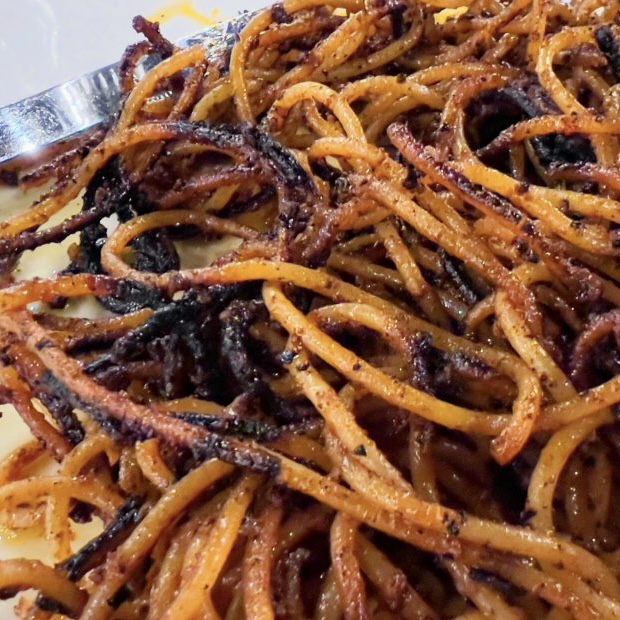
Originating from Bari, killer’s spaghetti should be three things. Burnt, crispy and fiery.
The technique is unusual, the taste unique!
Cooked using the risottatura method, tomato broth is consistently added to the dry pasta as it absorbs it and cooks.
Killing the spaghetti by letting it burn and blacken and crisp gives spaghetti all’assassina its unique taste and killer name.
More | Eat Puglia – killer’s spaghetti from Bari
8. Acquasale and friselle
Made with stale or toasted bread, acquasale was the traditional lunch of farmers and fishermen working outside all day.
Friselle, now purpose baked (twice) and usually served as antipasti, are prepared in the same way.
Dipped in water, seasoned with raw garlic, extra virgin olive oil and salt and served with (at least) a topping of tomatoes.
Once a simple, humble fare now a delicious and distinctive element of Puglia’s culinary tradition.
More | Eat Puglia – acquasale and friselle
9. Ciceri e tria
Chickpeas, cooked with an onion, carrot, garlic and celery. Drain the chickpeas and reserve the broth.
Fresh pasta. Use the broth to cook 2/3. The remaining 1/3 is deep fried.
Fry off some more onion, deseeded chilli and chopped tomatoes, add the chickpeas. Puree half. Return it and add the boiled pasta. Season, drizzle with olive oil and serve with the fried pasta and (optional) grated cheese.
Genius.
More | Eat Puglia – we visit Mamma Elvira
10. Taralli
Puglia’s answer to the pretzel, made sweet or savory.
They come boiled before being baked, or just baked. It’s a personal preference.
Plain, with fennel seed, or piccante (and increasingly in more flavors than the potato chips that accompany them), they appear with our aperitivi, traditionally to be dunked into our glass of wine.
BTW peanuts – arachidi- are always presented with a spoon to serve yourself.
More | Ostuni, la città bianca a great place for aperitivi
11. Frutti di Mare, Crudi
Il crudo barese is the raw fish tradition of Bari. At the old port fishermen serve up their catch of the day.
Sea urchin with savory fragrant orange flesh can be eaten fresh. With bread we fare la scarpetta and scoop out the flesh.
Taken home, it makes a favorite pasta sauce.
Raw octopus is the next prized catch. Stirred for at least an hour arrzzè u pulp, ensures its tenderness for eating raw.
More | Eat Puglia – Bari’s porto vecchio
12. Capocollo di Martina Franca
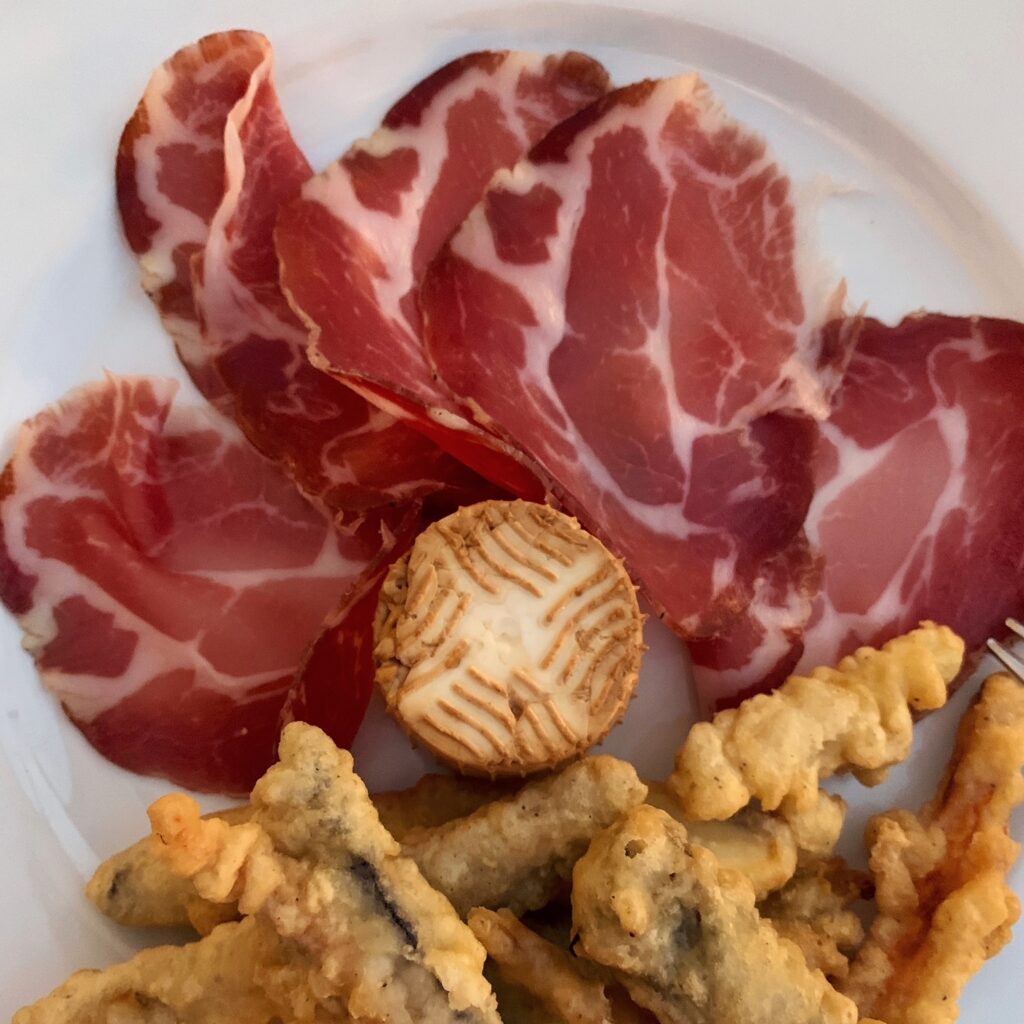
Bland would be a dry cured pork cold cut, from the neck. But #WeAreInPuglia. Food is an integral part of our culture. We use simple ingredients to make so much more of our produce.
Smoked with bay leaves, thyme, almonds, Mediterranean herbs.
Eaten as a cold cut, on charcuterie or over pasta.
You only live once.
More | Ostuni, la città bianca, perfect for an aperitivo
This quivering, milky egg of cheese has usurped even mozzarella as our go-to fresh cheese.
Food writer Nigel Slater on burrata, The Guardian UK 19 April 2021
13. Burrata
Burrata has become a global cheese, but its story originated in the 1920s in the southern Italian Murgia territory of Puglia.
It has a softer, creamier texture than mozzarella. But the best part is when you slice through to reveal its creamy interior.
Split one open and let the molten interior flow. That’s the joy of burrata.
More | Eat Puglia – the joy of burrata
14. Tiella di riso, patate e cozze
A gratin of rice and potatoes. The Puglia Kitchen is no stranger to double carbs.
Arranged in layers in a terracotta dish (the tiella) with onions, mussels, tomatoes and pecorino and baked until a glorious golden crust forms.
Originating from Bari as a meal for festival celebrations, riso, patate e cozze is now eaten across Puglia whenever mussels are in season.
More | the Puglia Guys’ quick guide to Bari
15. Panzerotti
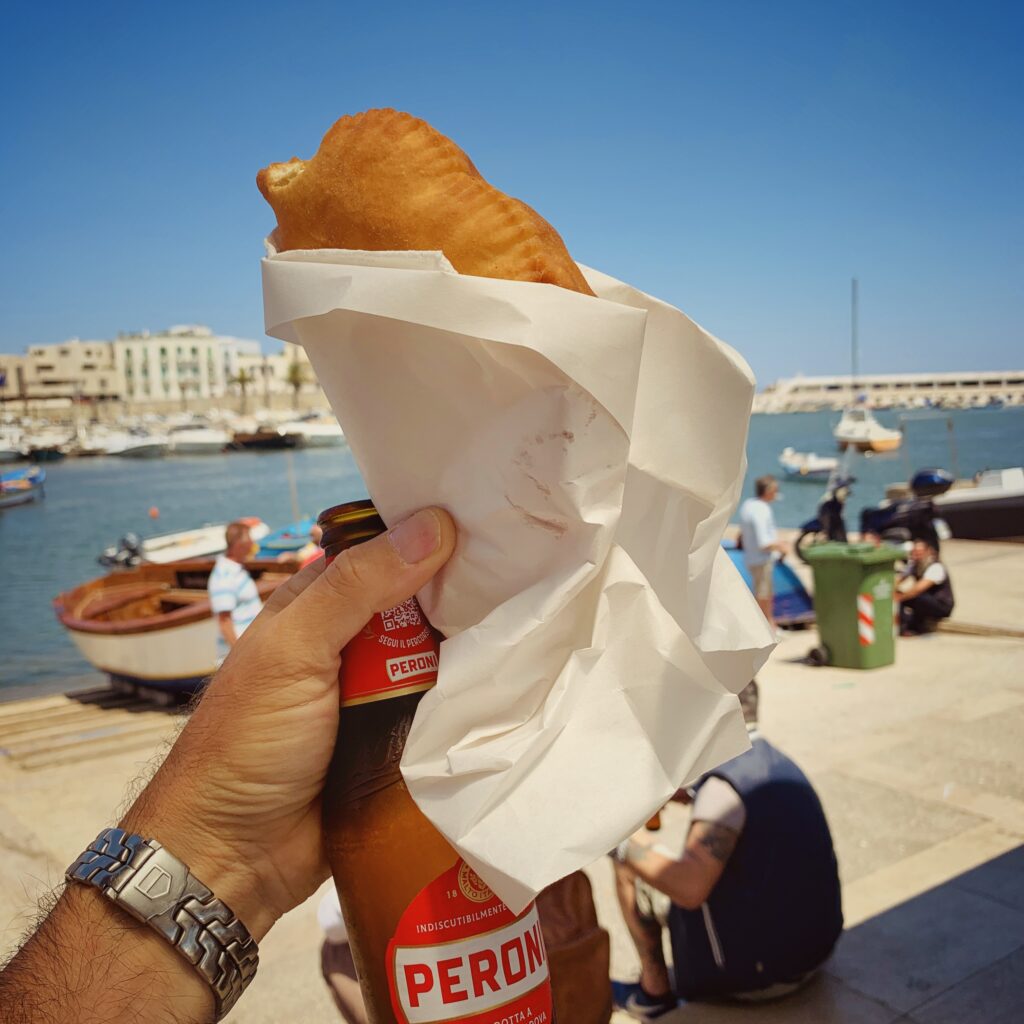
Epic street food from Puglia.
Folded over half-moon dough, stuffed and (typically) deep fried. Diced mozzarella and tomato is the classic filling, but more adventurous include mozzarella, guanciale, gorgonzola, ‘nduja and slowly cooked onion.
Best enjoyed with an ice cold Peroni at El Chiringuito on the Mola S. Nicola at Bari’s old port.
Ostuni’s Asso di Spade is a regular stop-off on our way home after a night out.
16. Cartellate
More glorious deep fried goodness.
The Puglia Kitchen culinary calendar is full of sweet treats that mark religious and other festivals throughout the year.
Cartellate al vincotto are our crumbly and crunchy Christmas biscuits, topped with flaked almonds and deliciously drizzled with vincotto di fichi – caramelised fig syrup.
More | we make our own cartellate al vincotto
17. Braciole, involtini
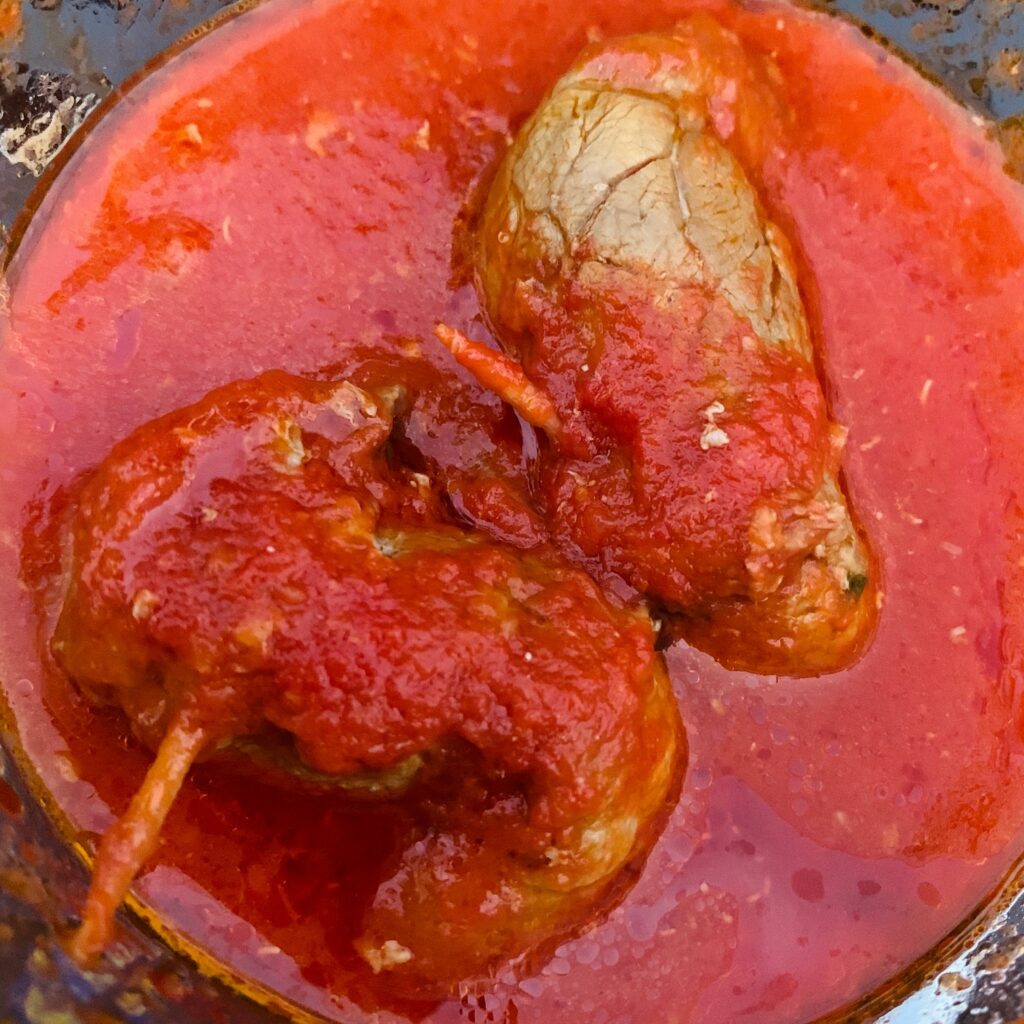
Throughout Italy braciole are meat chops, but in Puglia they are meat rolls, cooked slowly in tomato sauce.
Originally horse meat we now prepare them using thin slices of veal.
The meat is wrapped around a filling ranging from roughly chopped celery leaf to Canestrato cheese, sliced pancetta, chopped garlic and parsley, seasoned well.
The slow cooking in tomato sugò is essential.
18. La cozza tarantina
Taranto mussels benefit from the peculiar conditions of the bay in which they are cultivated.
Oxygen rich underwater springs flush into the inner basin which already has a higher salinity. This flavors the plankton, which plump up the mussels and gives them their distinctive sweet taste.
Tasting is believing. Raw and slurped like oysters with a drizzle of lemon juice these mussels – minutes fresh from shore – have to be tasted to be believed. They are incredibly sweet. Even when cooked.
More | Eat Puglia – Al Canale, Taranto
19. Pasta e cavolfiore
Pasta and cauliflower is a revelation.
As with most of our region’s cuisine it is made using a combination of simple ingredients, but the taste far exceeds its simplicity.
This is one that you might have to try at home. You will only find it on the table when cauliflower is in season, usually from late September to May.
More | the Puglia Guys’ recipe for pasta and cauliflower
20. Frittura di pesce
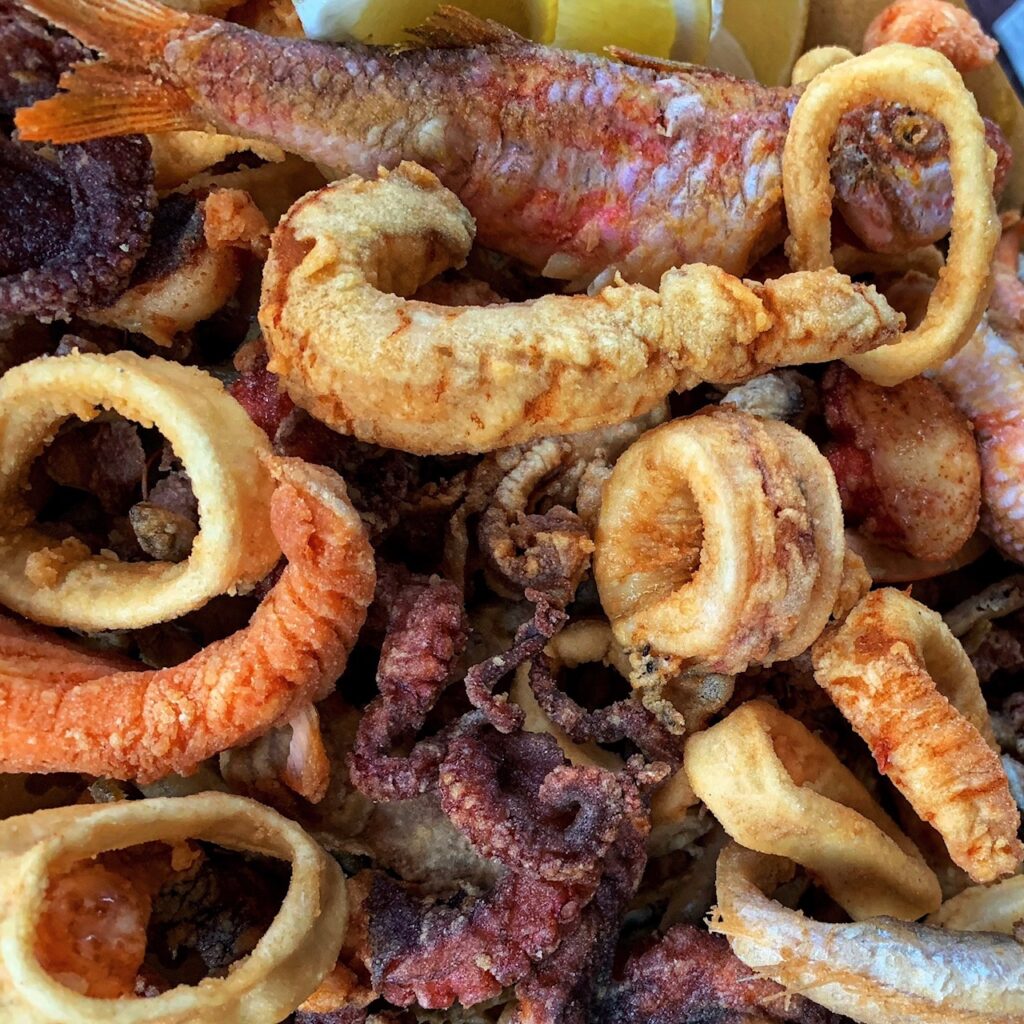
Fresh fried fish. In some seafood restaurants – typically those with fish counters – you select the fish and seafood that you want, and the quantities.
Availability will depend on the catch of the day.
Pizza and pasta may define Italian cuisine. Their versatility – they will tolerate the most diverse ingredients – accounts in part for their popularity beyond Italy’s shores, and their adaptability. New York or Chicago pizza…?
But we are a country with a hundred cuisines and thousands of recipes. Provincial loyalties account for a huge variety of gastronomic traditions across the country. Taste is a product of geography and climate (and history). Dishes are shaped by the seasonality of produce. Accordingly taste changes with location (and over time).
As a nation, generally, Italians do not tolerate bad food. (A suspicion of unknown ingredients, tastes and textures, and a stubborn sense of pride, perhaps accounts for an unwillingness to integrate foreign cuisine into Italian culture. Even in Milan and Rome it is difficult to find good Chinese, Indian or Mexican restaurants serving authentic regional cuisine from their countries. Finding a great burger anywhere in Italy can be challenging).
It is only by repute that certain parts of Italy are said to be the best foodie destinations. Wherever you find yourself, you will eat well.
You don’t have to visit Puglia to find the best burrata. They have it in Emilia-Romagna as well. Just as you will find quality prosciutto here in Puglia. But here you will also find regional specialities like capocollo di Martina Franca. Just as you will wherever you are in Italy.
We might not visit Trentino or Umbria for their seafood, but here in Puglia – we have the longest coastline of Italy’s mainland regions – we wouldn’t dream of missing out.

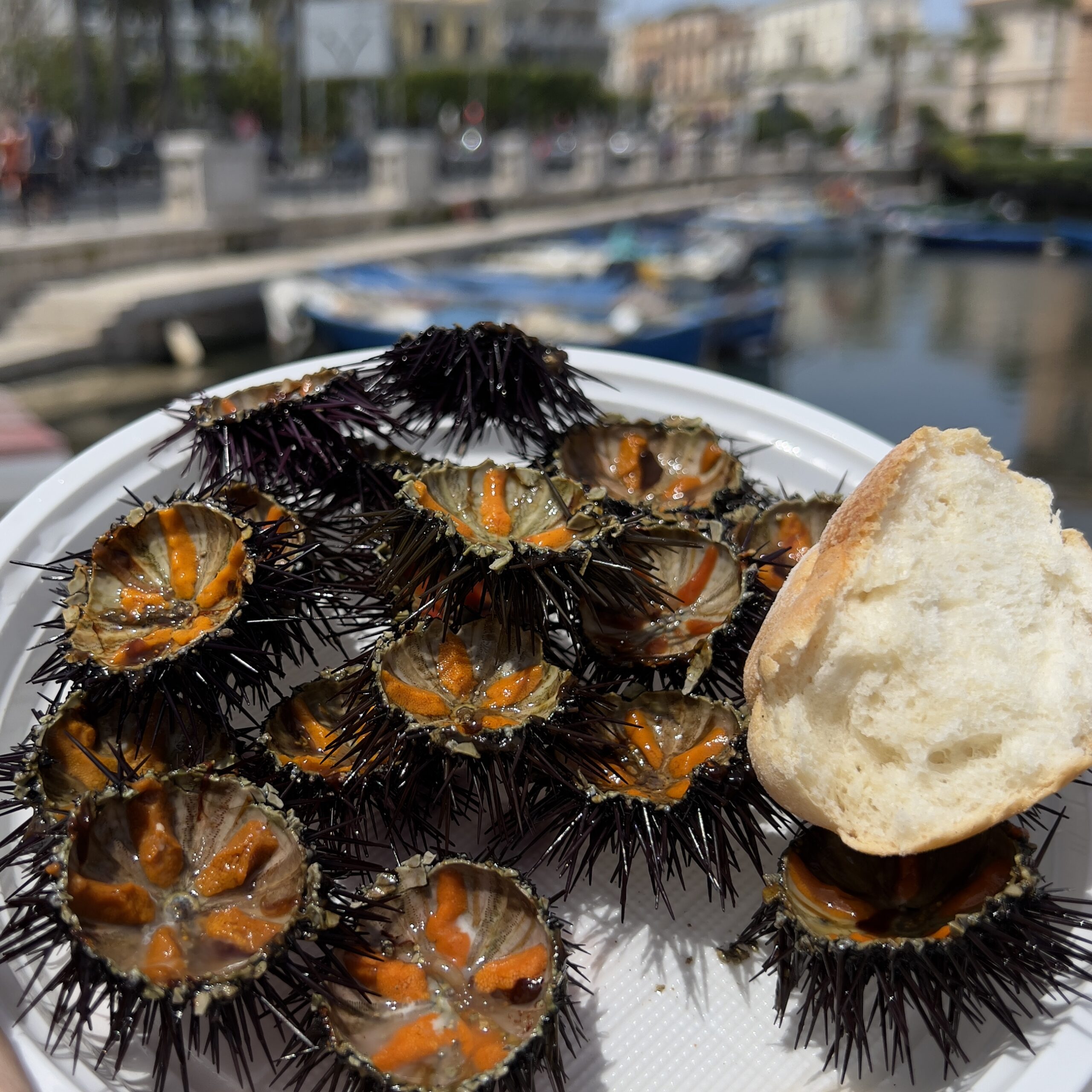
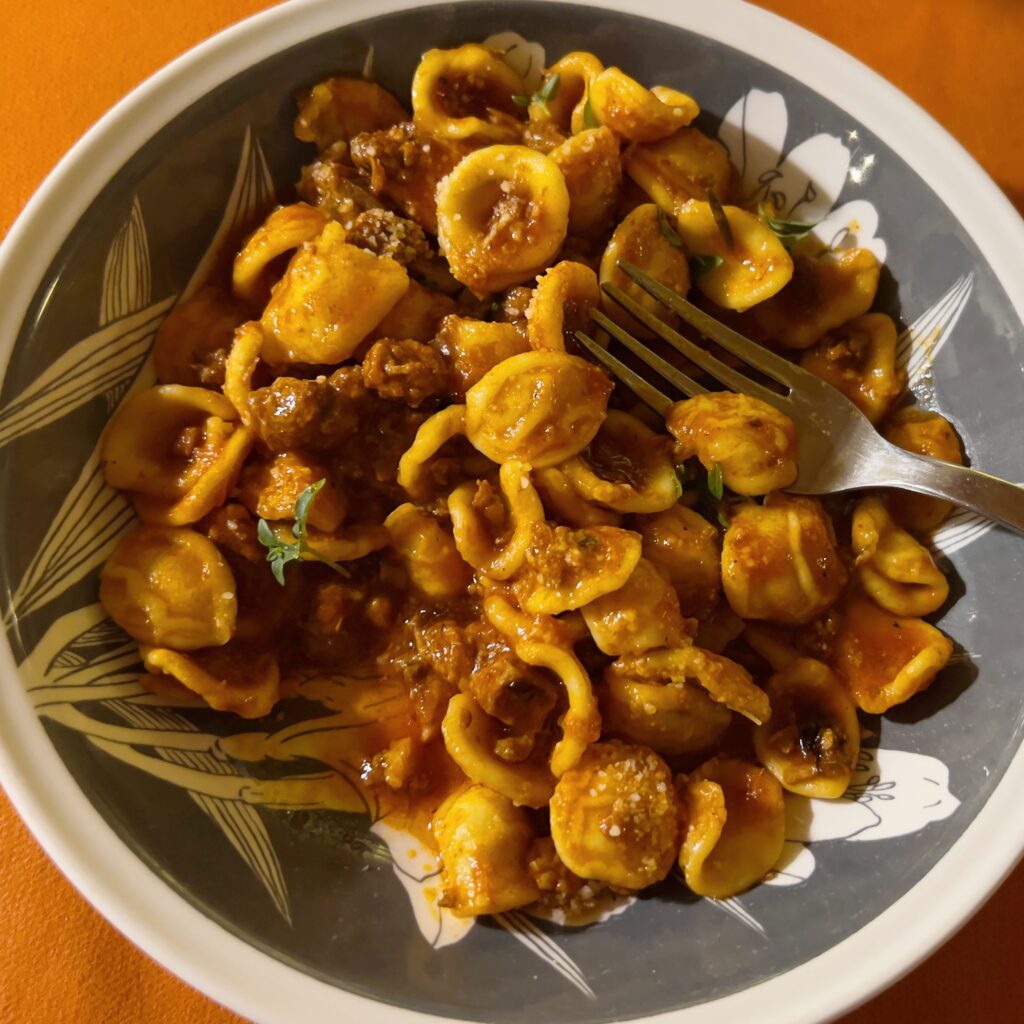
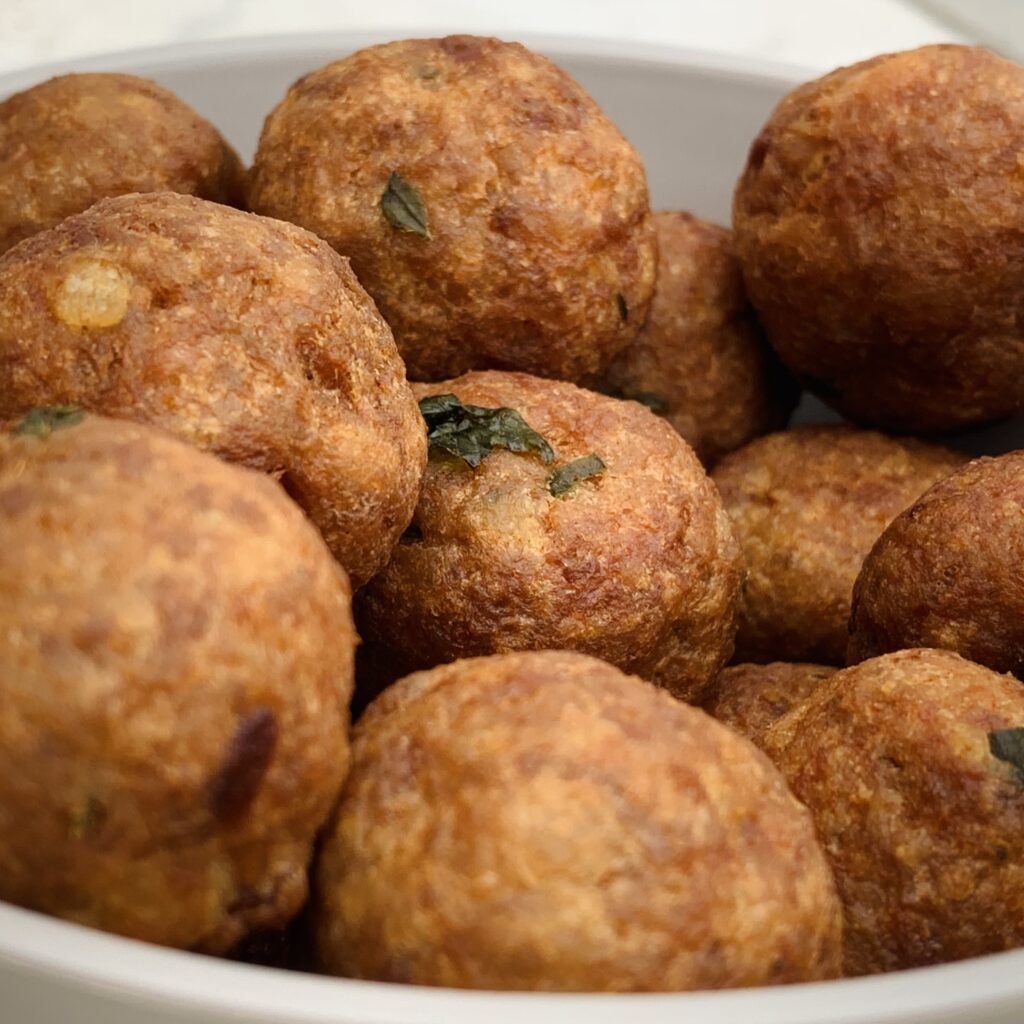
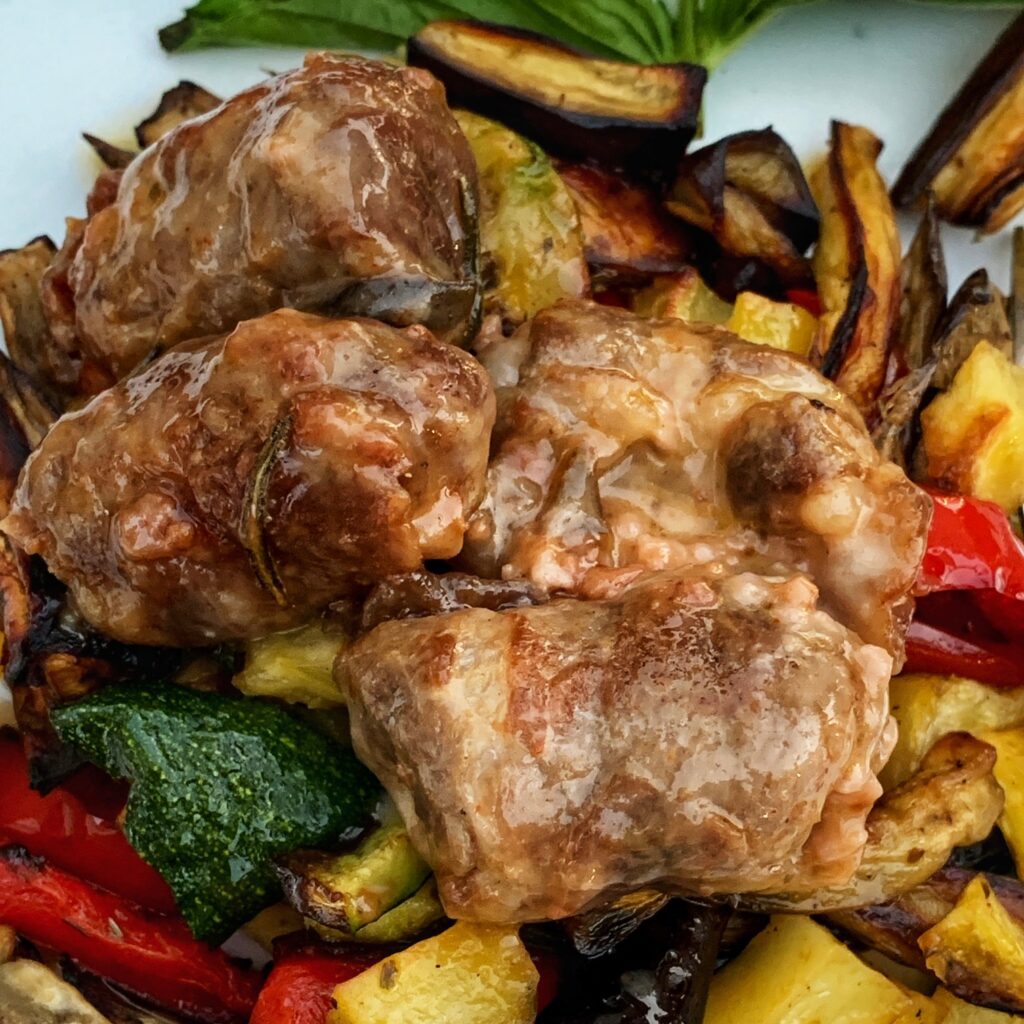
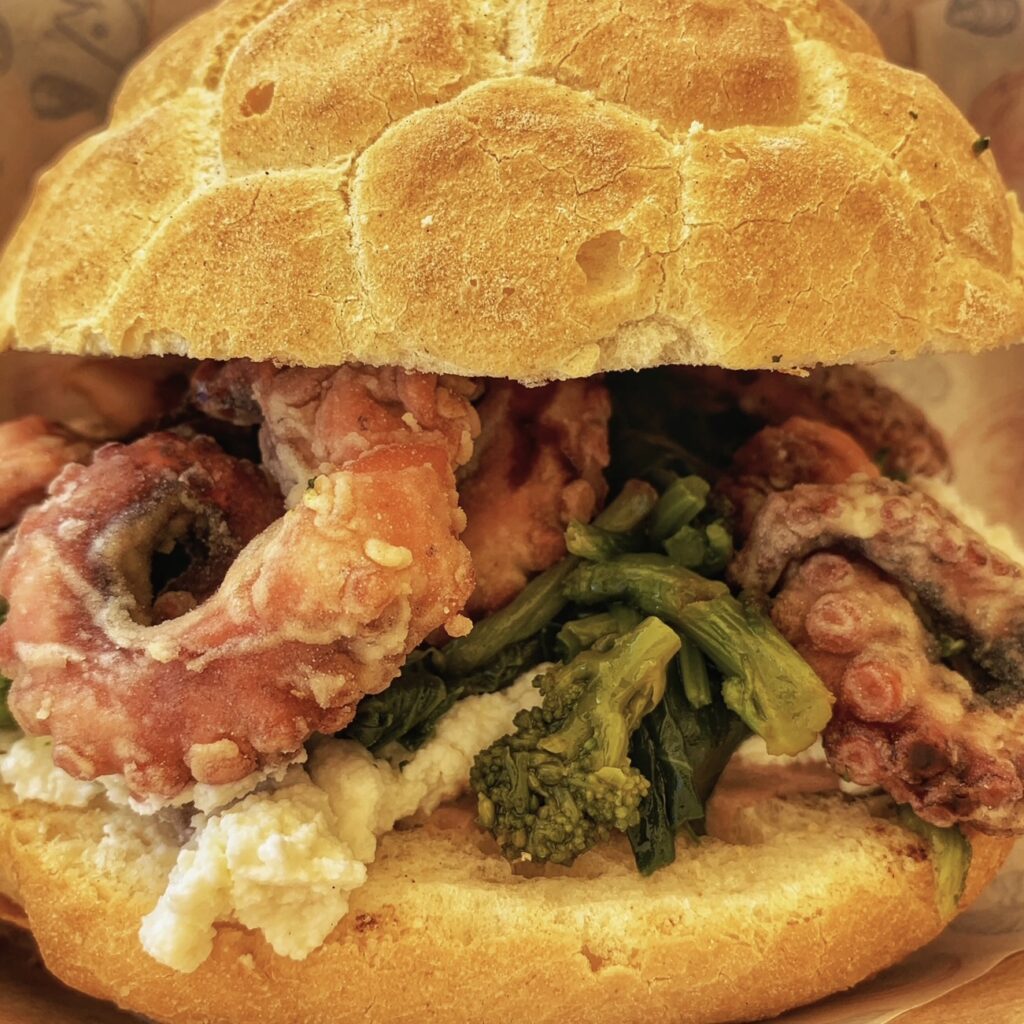
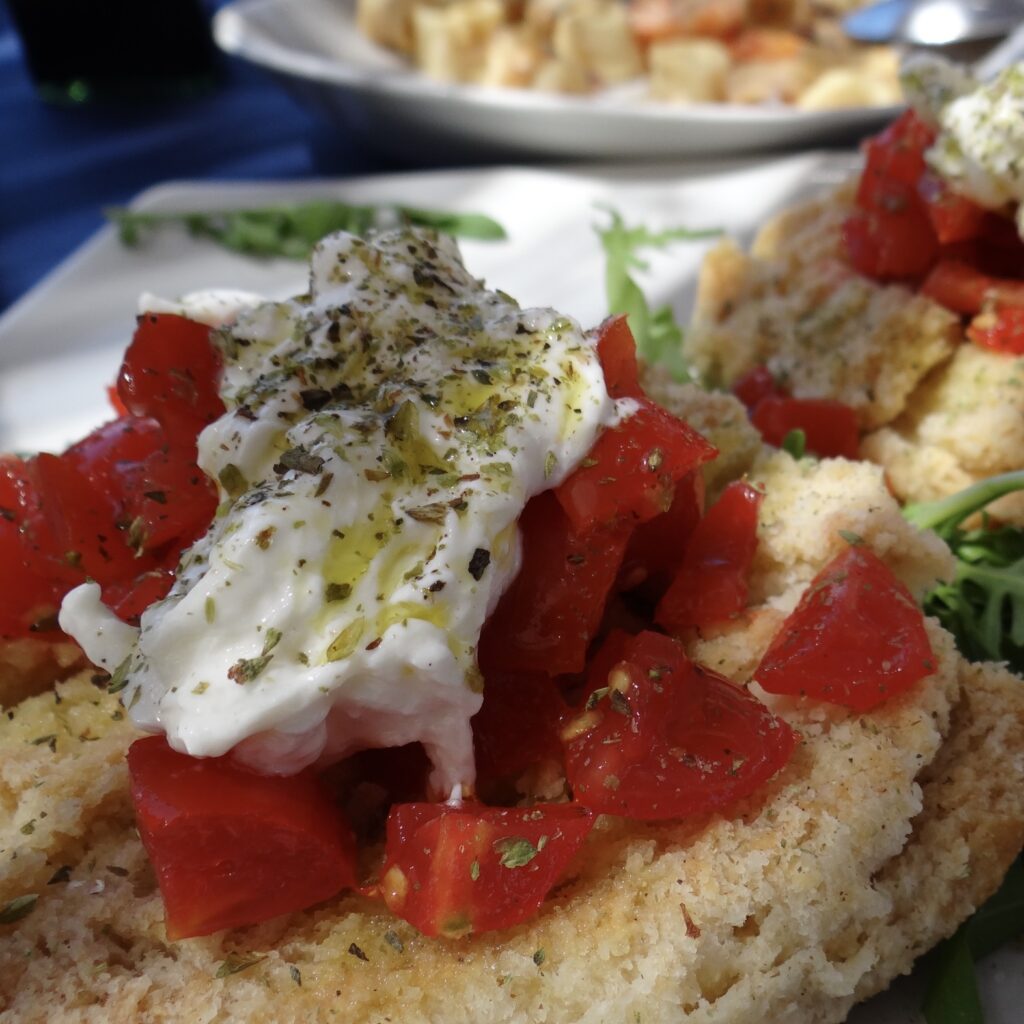
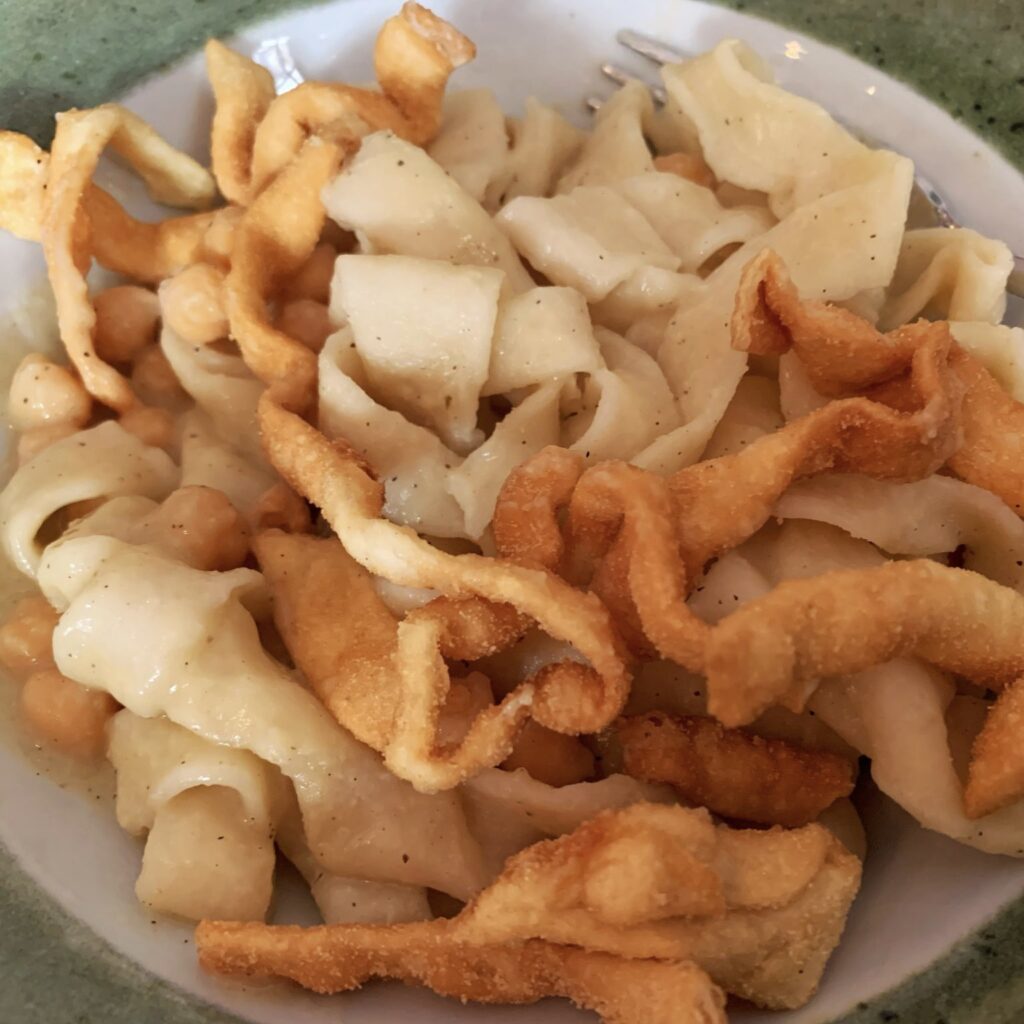
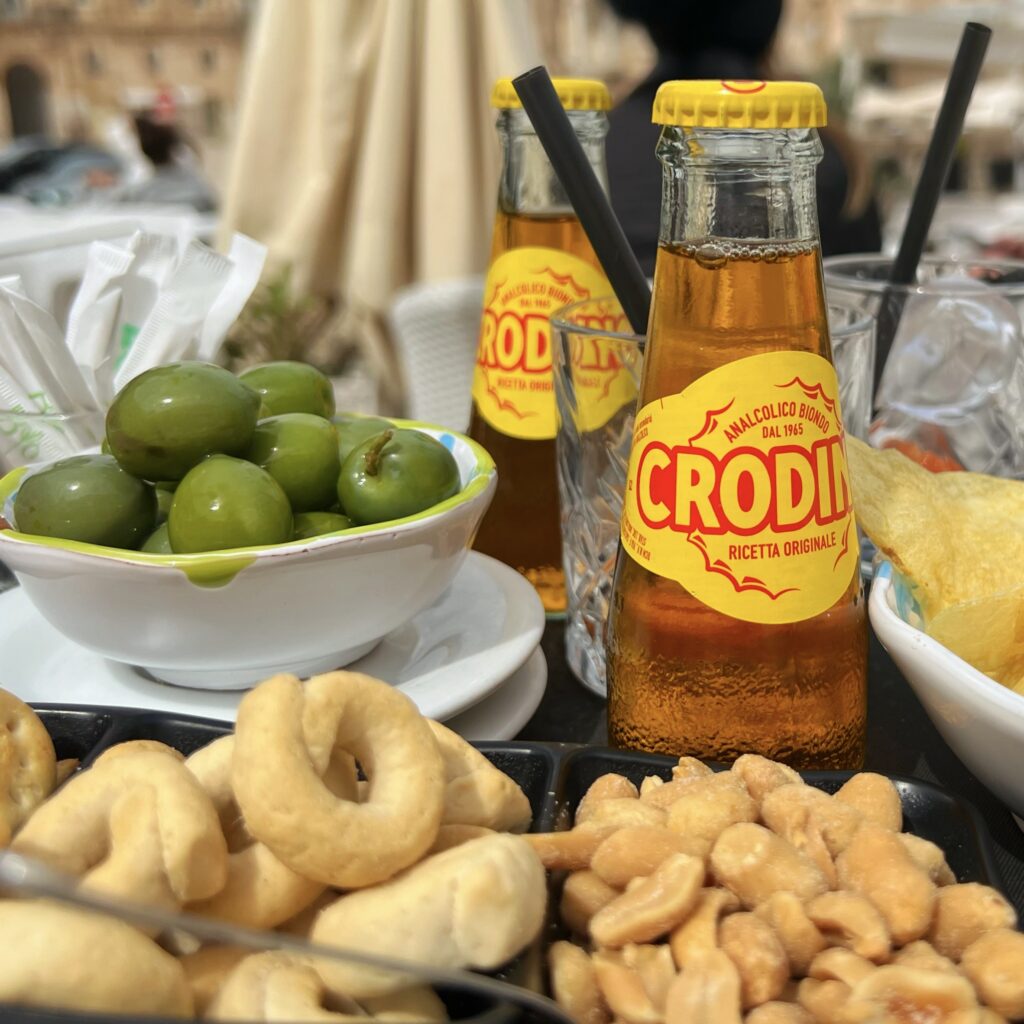
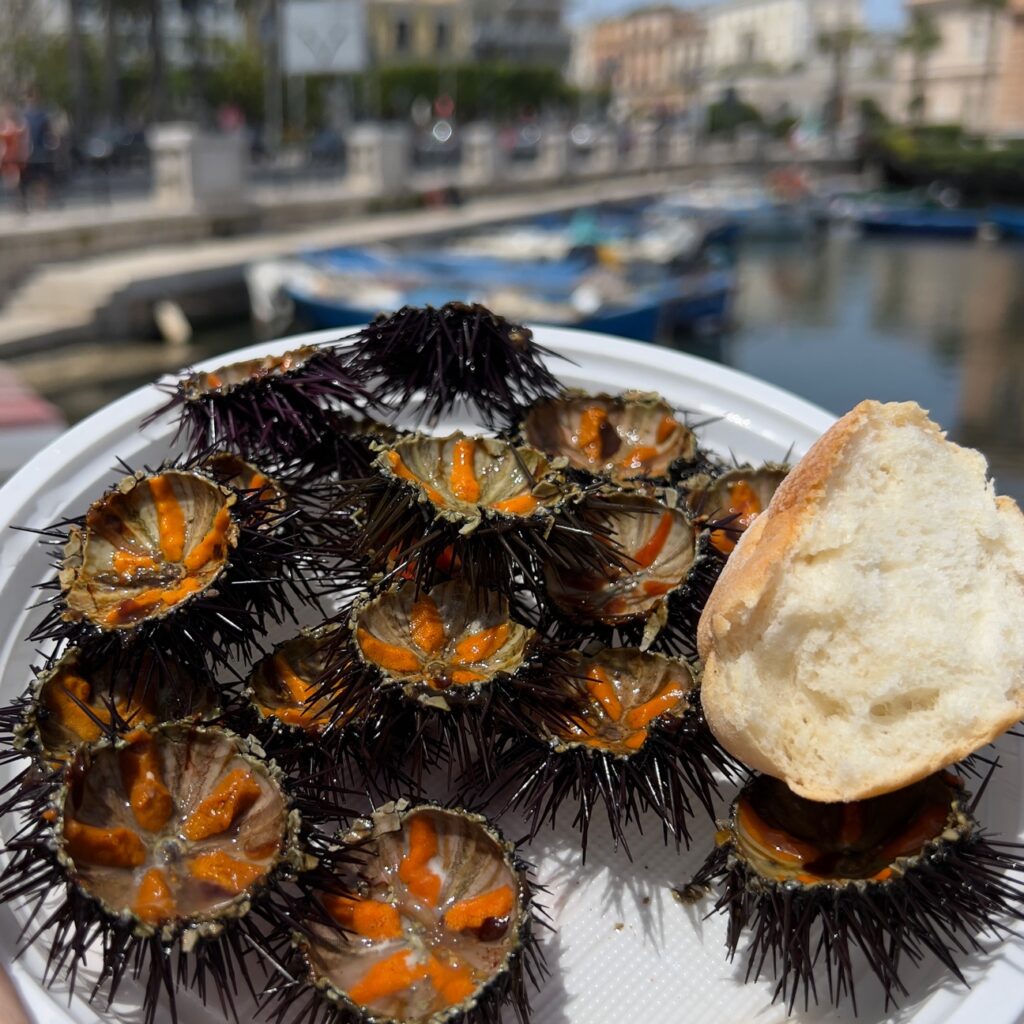
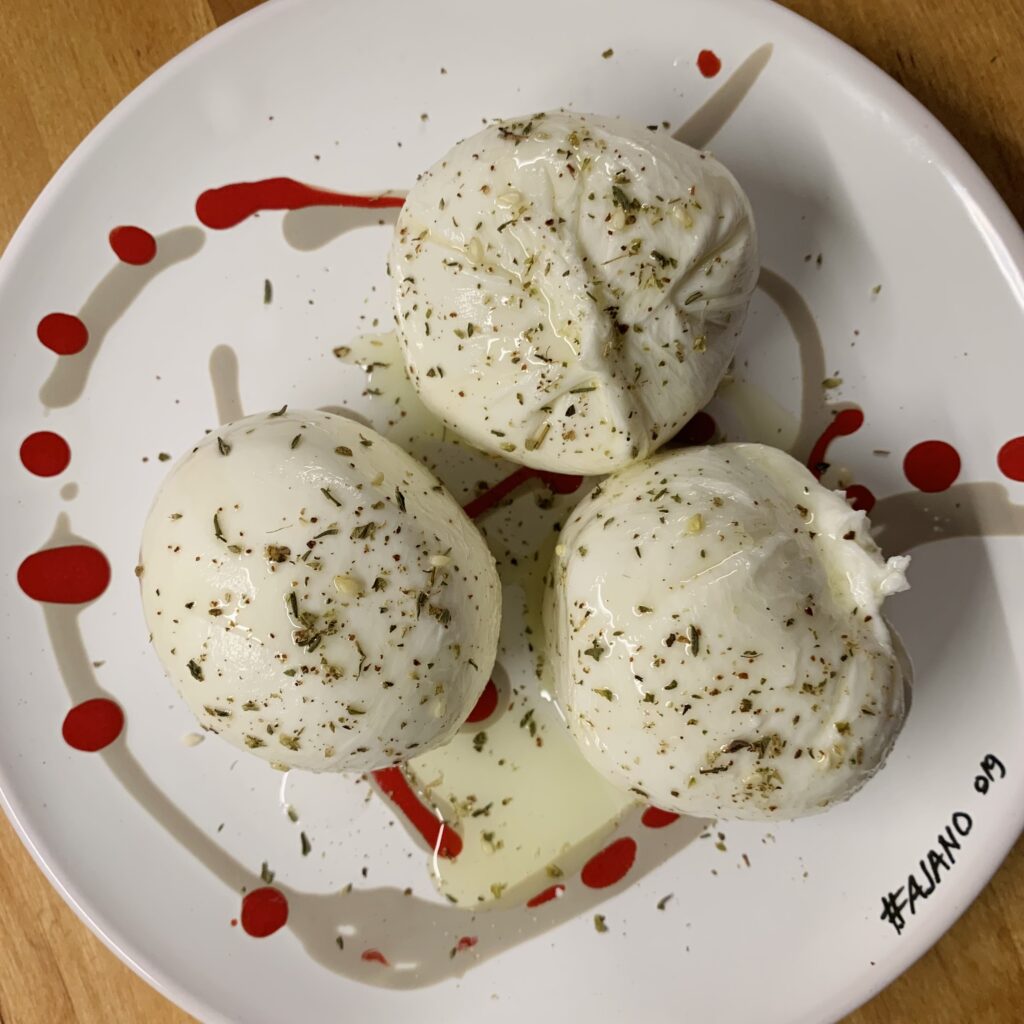
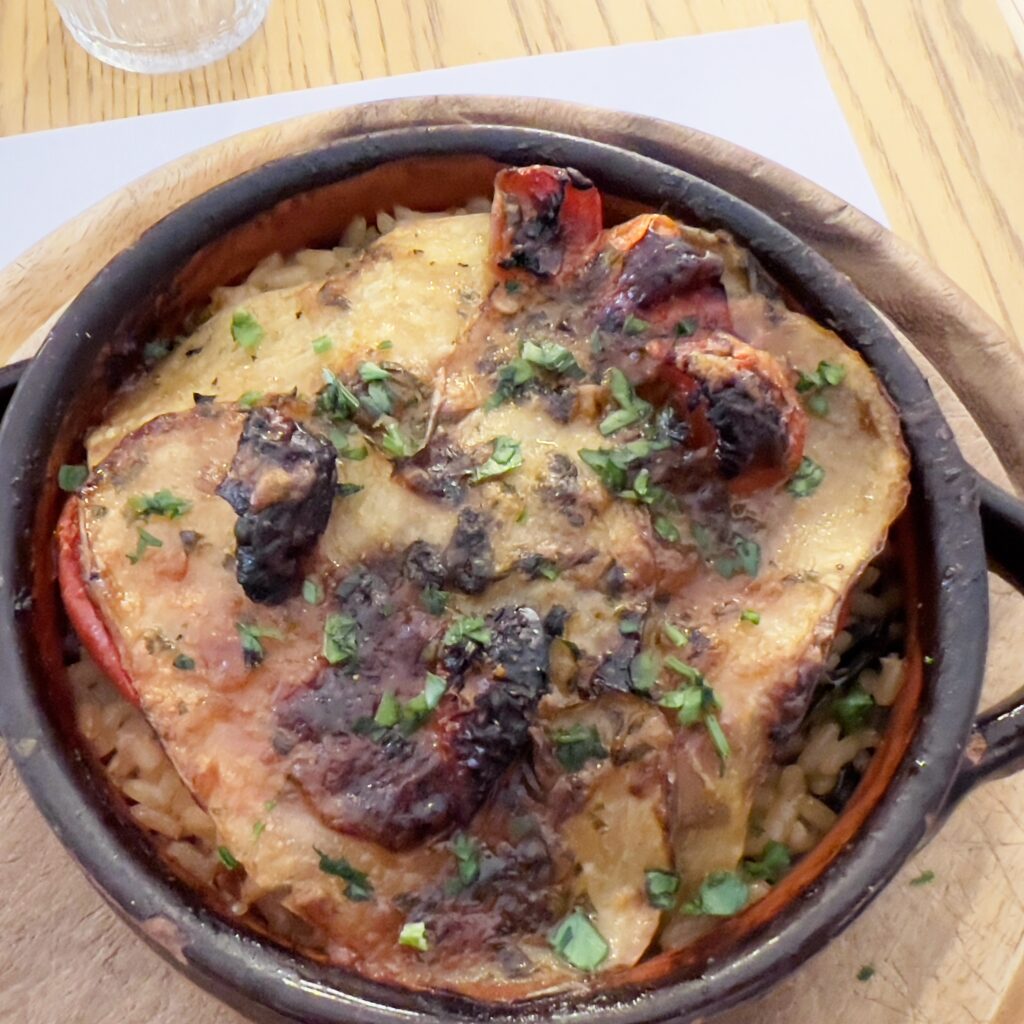
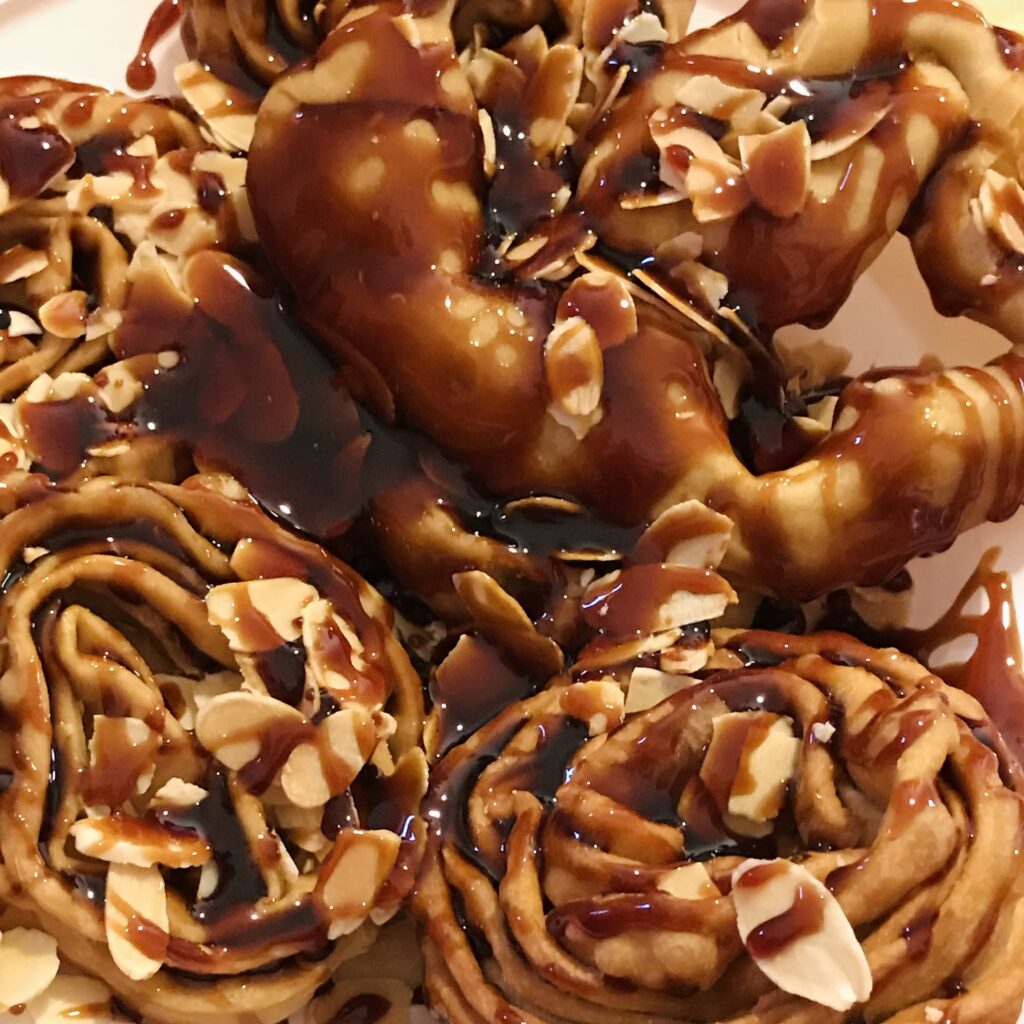
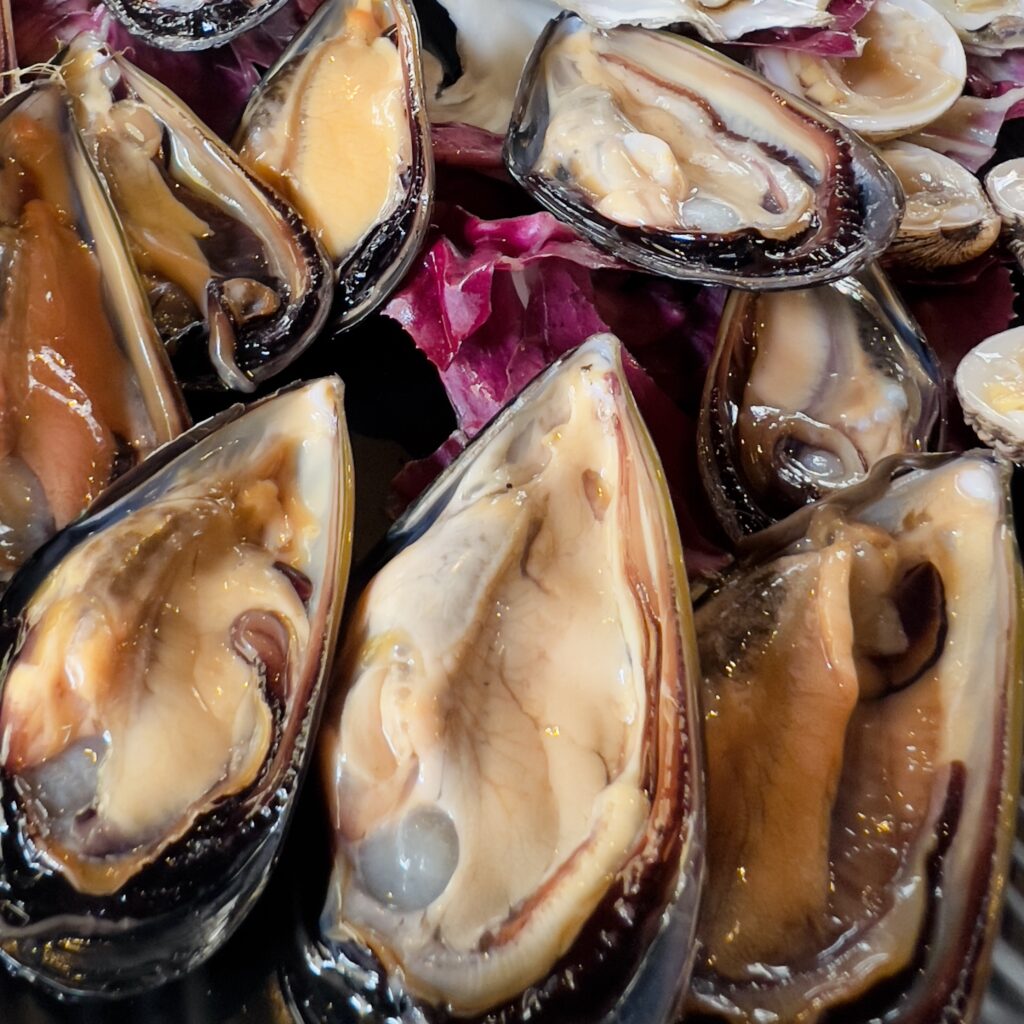
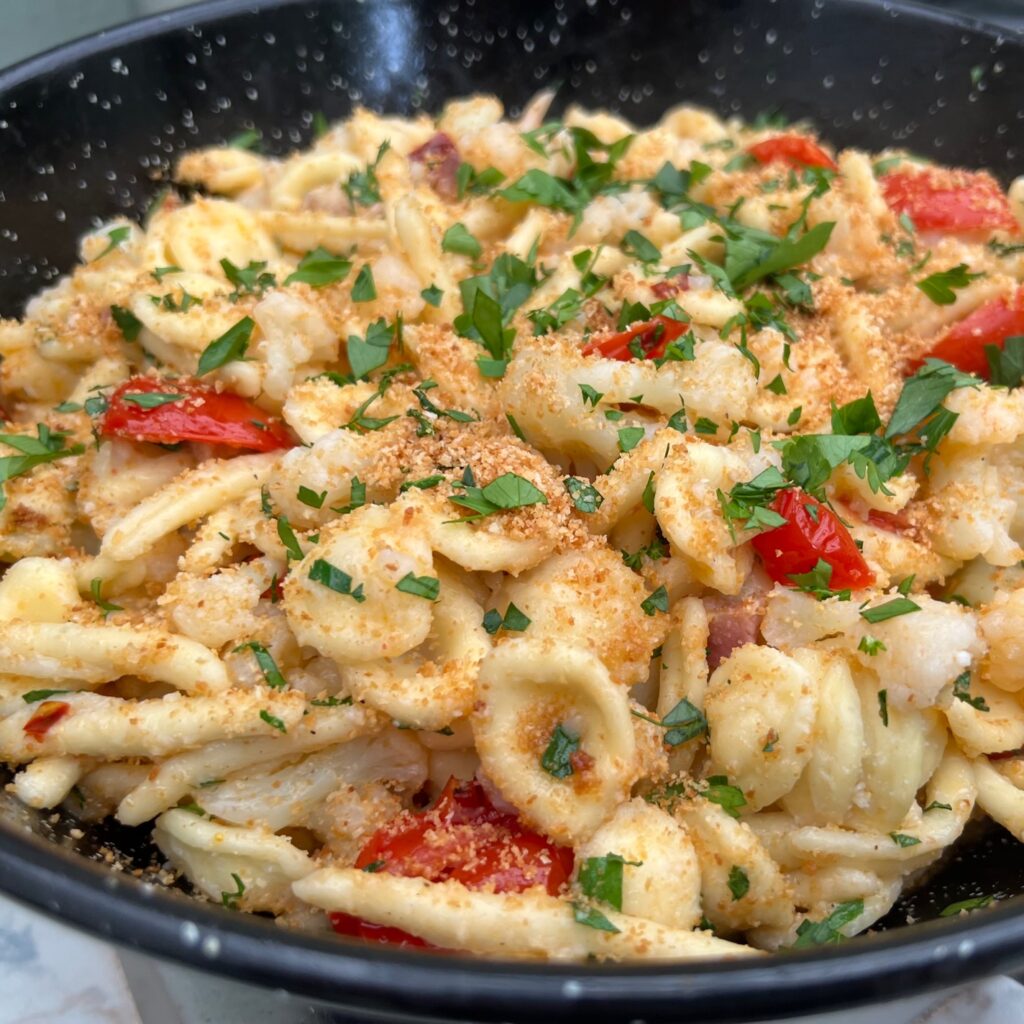
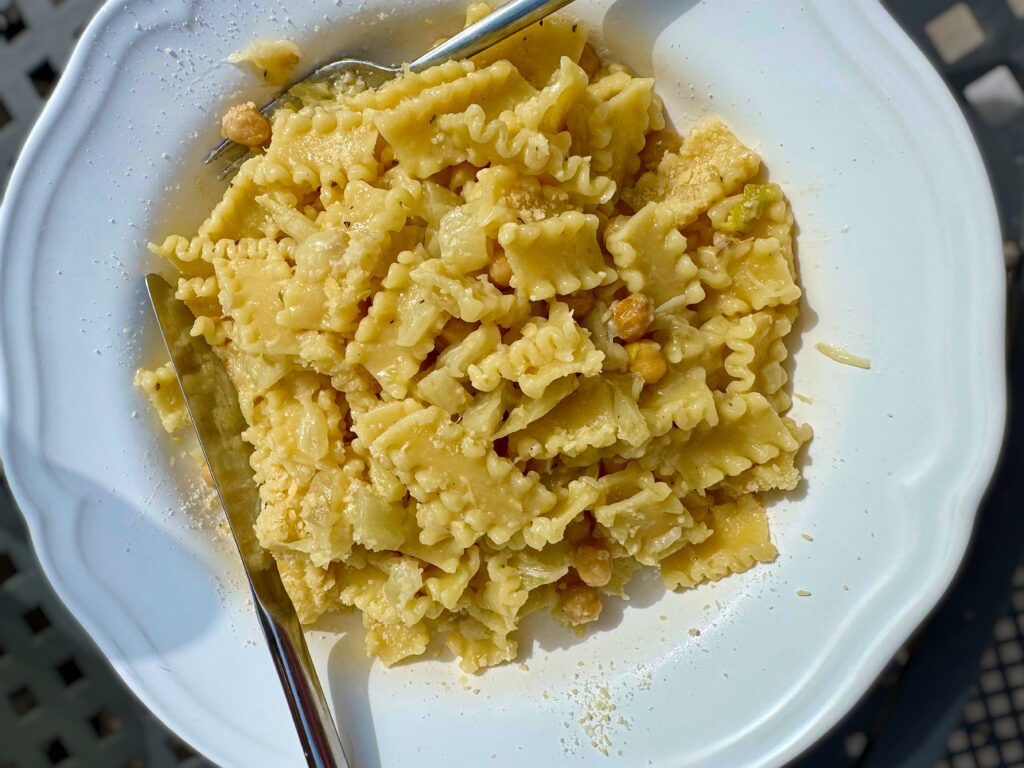
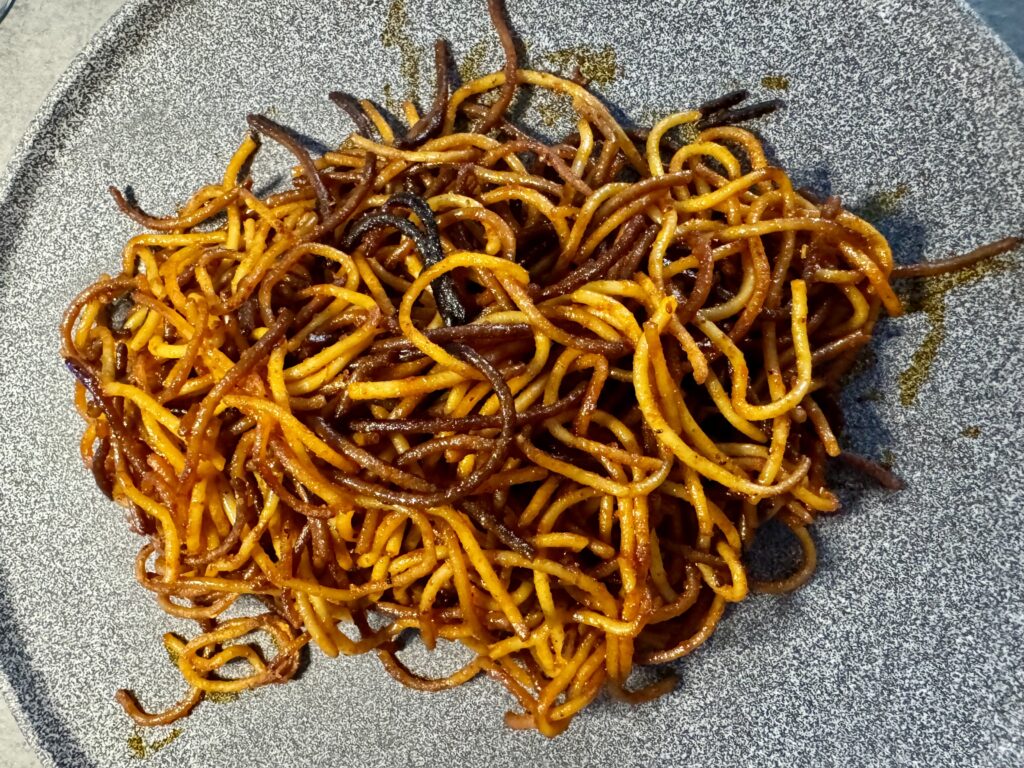
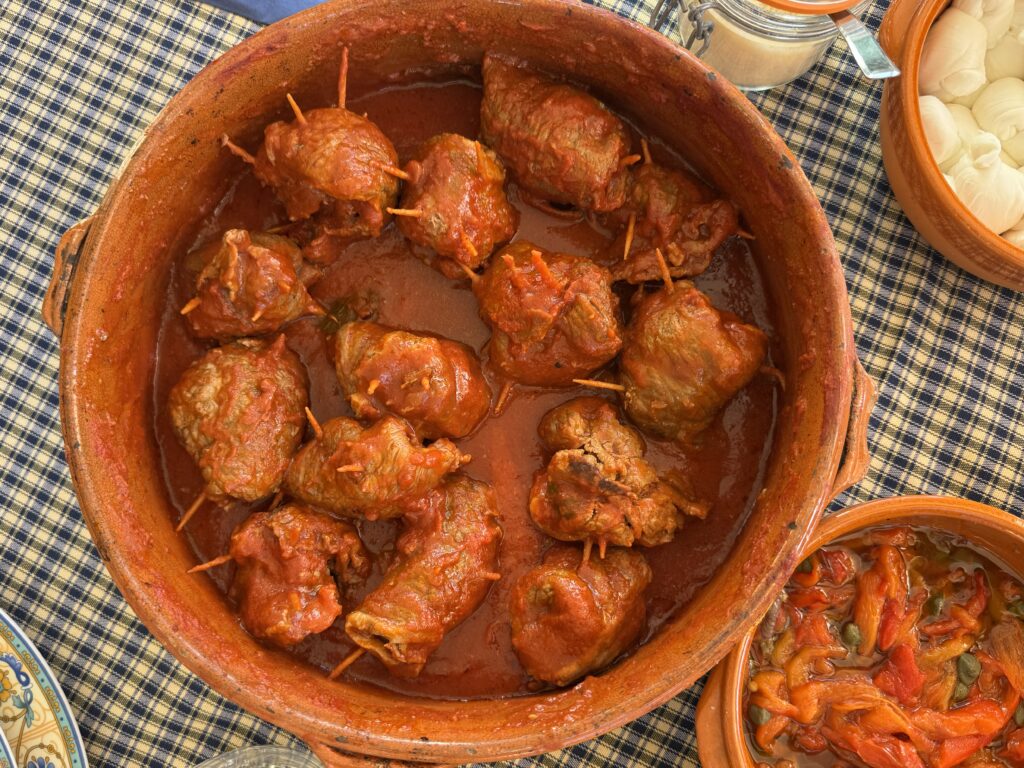
This all looks amazing! I want to try every one of these Puglia dishes! And thank you for sharing burrata with the world.
A great selection and many I hadn’t heard of before. Would love to give the Bombette pugliesi a go sounds lovely